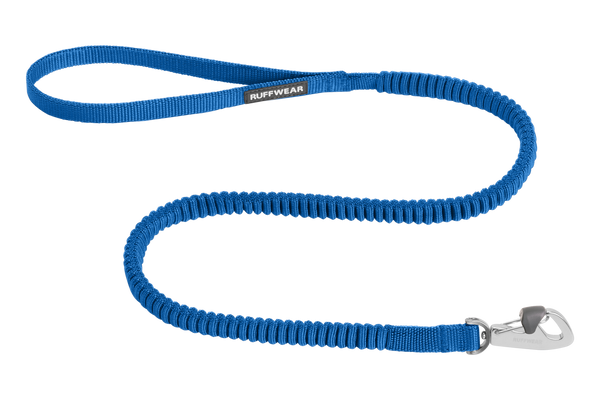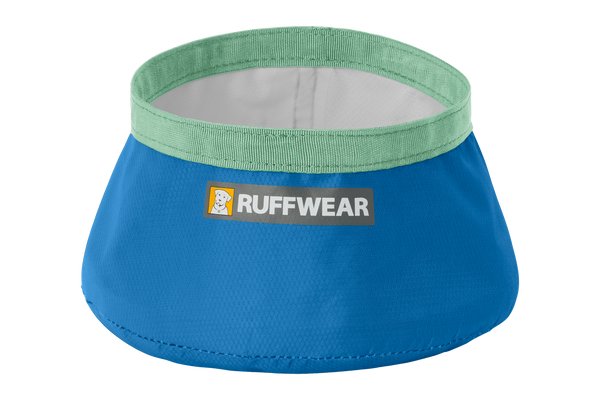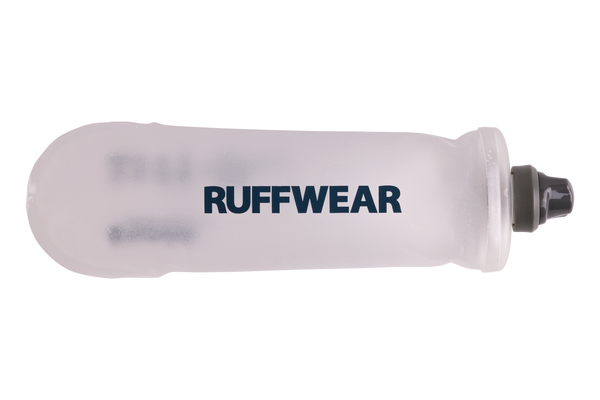Guide: How To Run With Your Dog
Looking to bump up your heart rate, boost your fitness, or add an exciting activity to your routine with your canine companion? We're here to introduce you to running in a way that keeps it fun for both you and your dog.
HOW TO RUN WITH YOUR DOG: THE STARTING LINE
“I’m not a runner.” “Running is hard.” “Where do I even begin?” If this is you, you’re not alone. Running with your dog can seem intimidating, but we’ve got you covered — Ruffwear Pack member Dani and her rescue dog Vilas are here to guide you through exploring this new way to move together. We’ll cover:
- Motivation: What's so great about running with dogs?
- The Golden Rule: Four words to start you and your dog off on the right paw (setting expectations)
- Before the Run: How to prepare for running — considerations like checking with your vet, your own doctor, planning a route, and trail etiquette
- The Gear: What gear do you need to get out on a run with your dog?
- Training Plan to Run a 5K with Your Dog
- Beyond the Training Plan: How to keep going
MEET YOUR COACHES: DANI & VILAS
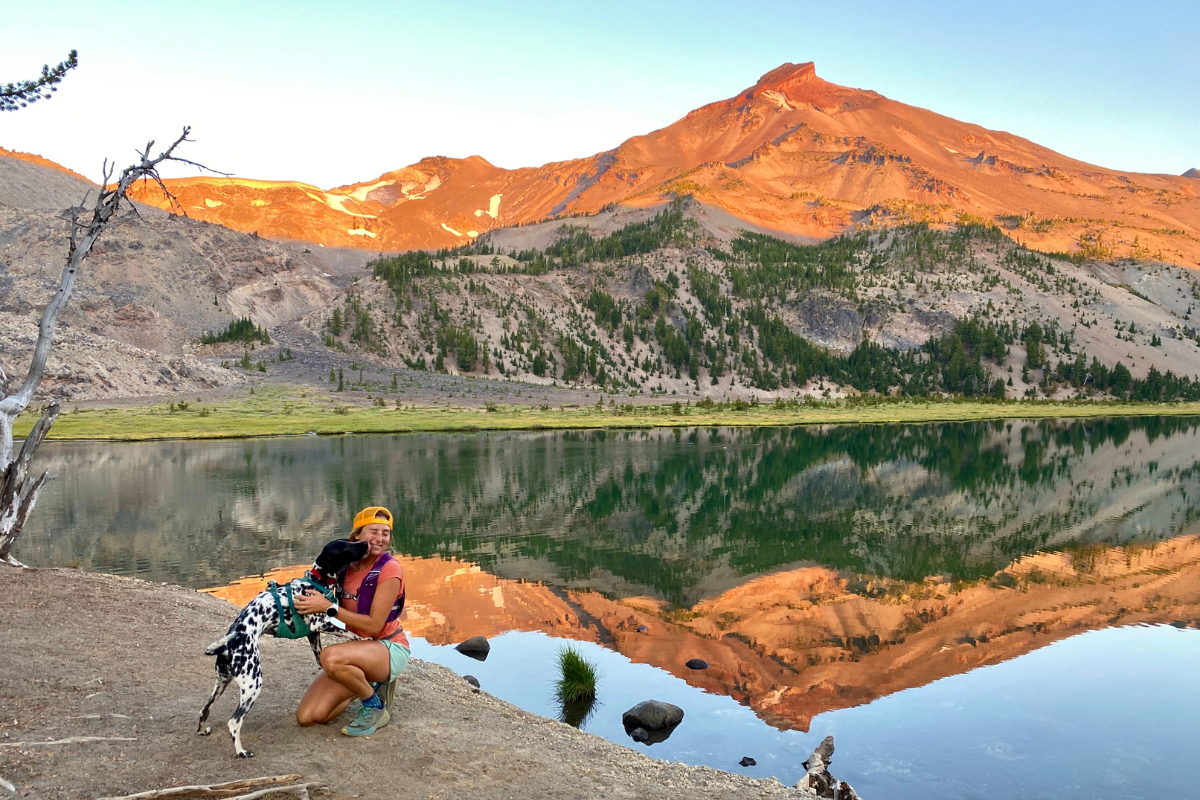
Dani is a Ruffwear Pack member and has been running with her 8-year-old rescue, Vilas, for seven years. Vilas, a German Shorthaired Pointer mix, has logged hundreds of miles with Dani over the years — her longest run to date is 42 miles where they circumnavigated Mt. Hood (Wy’East)!
WHAT’S SO GREAT ABOUT RUNNING WITH YOUR DOG?
You might be wondering, why run with my dog when I could just do it on my own? Running with your dog has amazing benefits for both of you, and every runner’s “why” will look a little different.
“Running with Vilas is so much more enjoyable,” Dani says. “She brings a lot of joy to the trails. It’s just a reminder to be present in the moment and I'm more focused on her needs as well as my own. It’s not about how fast I’m going, it’s just about enjoying being out there with her.”
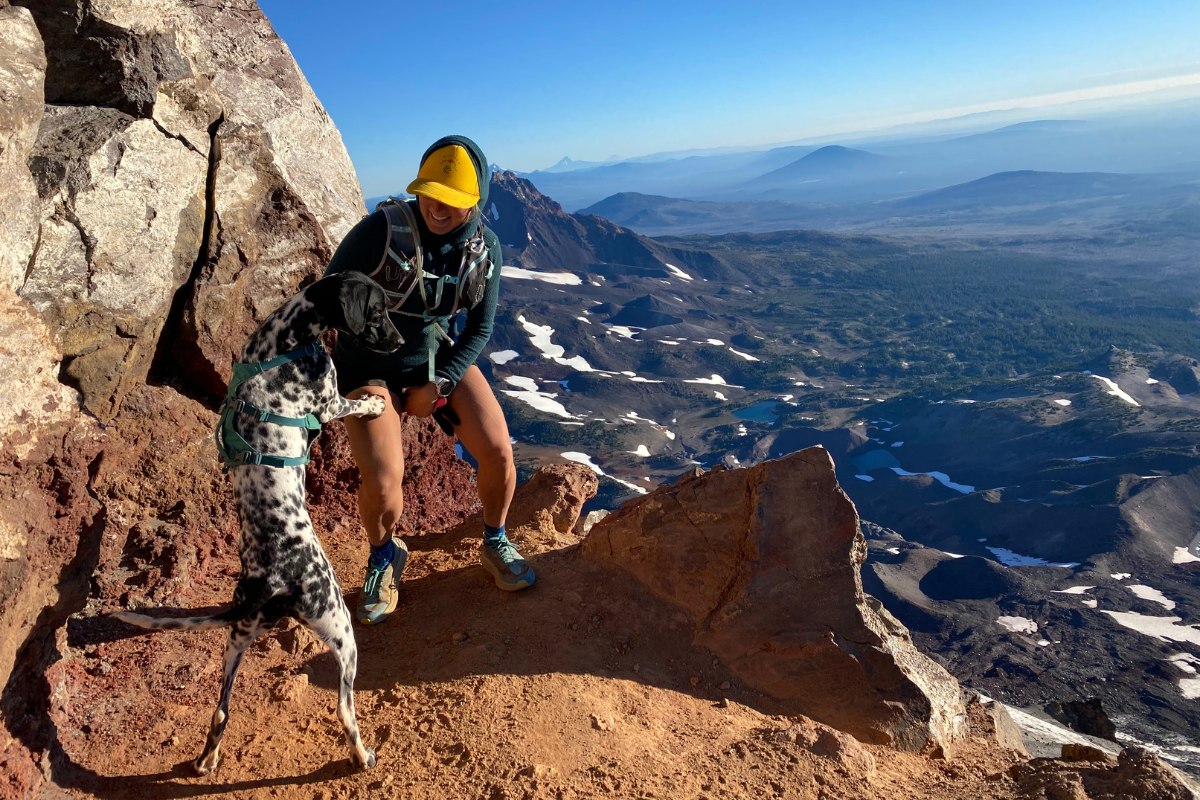
Here’s a round-up of top reasons why running with your dog is so awesome:
- Dogs are great distractions. Running solo, it’s easy to get sucked into your own mindset. Running with a dog creates constant external stimulus, and witnessing their joy of exploration adds to your running experience.
- They’re great motivators. Dogs have an incredible knack for motivating their human companions, especially when it comes to exercise. Their boundless energy and enthusiasm can be contagious, making it easier for us to lace up our running shoes and hit the pavement.
- They help us break up the routine. Running can sometimes feel monotonous, especially if you're following the same route day after day. When you have a running buddy by your side, every outing becomes an adventure. Dogs love to explore new sights, smells, and sounds, so they'll naturally lead you to discover new trails and paths you may not have explored on your own.
- Dogs remind us to recover. While it's essential to push ourselves during our runs, it's equally important to prioritize rest and recovery to prevent injury and burnout. Dogs instinctively know when it's time to slow down and take a break, whether it's to sniff a particularly intriguing scent or simply soak up some sunshine. By following their lead and embracing these moments of rest, we can make sure our bodies stay healthy and strong for future runs.
THE GOLDEN RULE
When it comes to running with your dog, there’s one golden rule you must follow: Run your dog’s run.
If you approach all your planning and head out on your run with this top of mind, you’ll be golden.
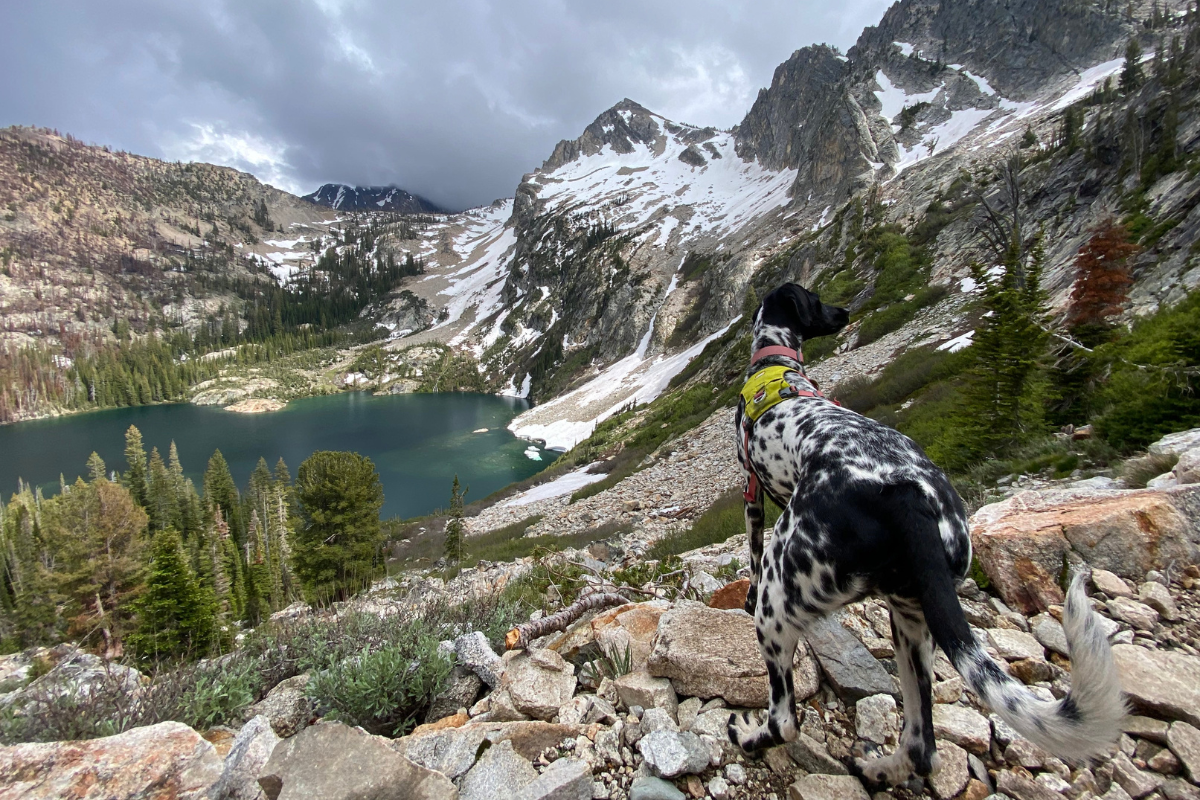
You may be changing up your usual pace or distance or trip lengths. You may have to adjust to frequent stops, especially if on leash. Perspective is everything!
“You know your dog best,” Dani says. “Obviously running 42 miles is not for every dog. That was over years of training with her and learning her cues. I taught her at a young age to run really close to me on my heel. Rather than letting her sprint around, she’s really good at conserving her energy which really helps with those long distances.”
When it comes to Vilas’ cues, Dani says she looks for bright eyes, ears forward, tail wagging, and no excessive panting. It’s important to understand your dog’s own cues to make sure they’re ready and excited for the run.
Running your dog’s run also means learning your dog’s desire for running, as well as your own. We encourage you to run together and take opportunities for your dog to rest, especially if you’re looking to increase mileage. Variety is a pro’s hack to keep running enjoyable.
BEFORE HEADING OUT ON YOUR FIRST RUN WITH YOUR DOG
Check with Your Vet (and Your Own Doctor)
It’s best to not run a dog before they're fully grown. This depends on your dog's size and breed, so check with your veterinarian to confirm whether or not it’s appropriate. It's important to let their bones form without the beat down of a lot of miles. With Vilas, Dani waited until she was one year old. They started slow and have worked their way up in distance since.

Check in with Your Dog
Every dog is different, so it’s key to practice noticing your own dog’s signs for “Let’s go!”, “More, please”, and “Time to be done.”
Do they join you at the door when you’re tying your shoes or do they lay on their bed? Are they moving around fluidly or are they a bit stiff when they first stand up and take a few steps? Is their appetite average or has it increased?
If it’s the first on any of these questions, they are likely good to go. If it's the latter on any of these, it might be time for a solo run.
“If Vilas’ ears are back or if she’s panting, that’s usually when we have had to turn around,” Dani explains. “If you know what’s abnormal, you know when to stop.”
4 Tips for Planning a Dog-Friendly Route
- Trial run. Get a sense of your area before you leash up. Run a few different routes on your own first to scout it out, or walk the routes with your dog first.
- Leash check. Look up leash regulations in the areas your route passes through. If your route passes through an off-leash area and off-leash works for you and your dog, that can be a great way to mix things up and run at your own pace. If not, there’s a lot of fun to be had running together (like a dog-powered turbo boost when your legs get tired).
- Where's the water? Know your water sources both for drinking and for dipping, especially in the heat.
- Look for bonus features. Scope out dog parks, snack stops, and where garbage cans are so you don’t have to run with full poop bags.
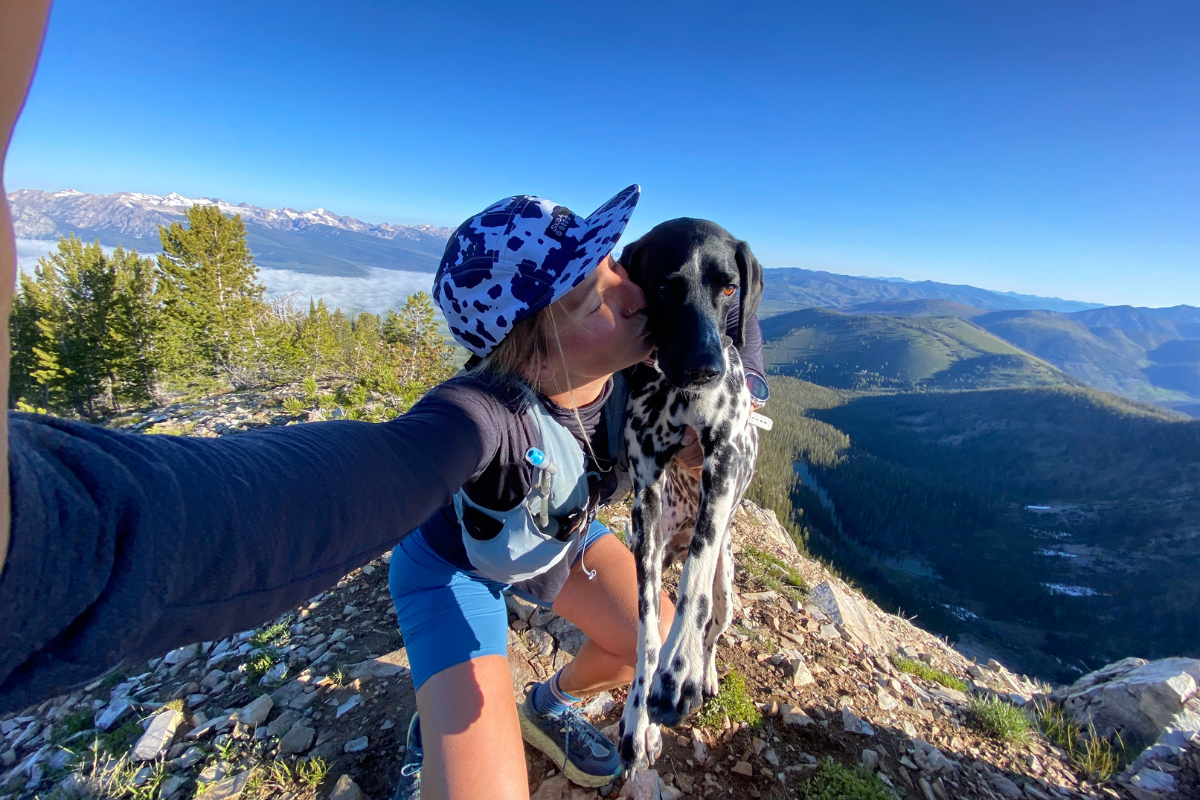
Once you’ve planned your route, it’s also wise to practice your leash/harness set up on some walks before running with it. Adjusting to a new leash length or running speed can create confusion, so practice first and take it slow.
“We choose trails that are off leash, however, I always bring the Trail Runner™ Leash in my running pack or her running pack, so if I need a leash I have one,” Dani says.
Brush up on Trail Etiquette
If you plan on joining the ranks of passionate runners hitting up the trails, you’ll need to make sure you’re up to date on trail etiquette. Keep these tips in mind before you hit the pavement with your pup:
- Pick up poop! No need to expand on this one.
- Keep your dog to the farside when passing other dogs on leash. Put yourself between your dog and other dogs so that you can run “on by” and not have to pause and greet, or to avoid conflict with a dog that needs more space.
- Leash up in on-leash areas.
- Have reliable recall in off-leash areas.
The After-Run Recovery
Having a post-run plan is also key to making sure both you and your dog get the rest and recovery you need.
- Re-fuel after the run – have a snack for you and a snack for your dog.
- For humans, stretching and foam rolling will help ease muscle tightness and soreness when done with consistency.
- For dogs, consider giving them a nice, gentle massage to relax their muscles.
- Make sure there’s plenty of fresh water for your pup at all times while at home.
HELPFUL CUES & TRAINING IDEAS FOR RUNNING WITH YOUR DOG
Having a basic grasp of training cues is important to ensure a safe and enjoyable running experience with your dog. Some people choose to use sled dog terms, especially if they’re connected to their dog. Here are some helpful cues you can teach your dog to make your runs smoother:
- "Let's go": This cue encourages your dog to move forward or start running.
- "Easy" or "steady": Use these cues to signal your dog to slow down or maintain a steady pace.
- "Right" and "left": Teach your dog directional cues to guide them during turns or when navigating obstacles.
- "Stop" or "wait": These cues are essential for teaching your dog to halt or pause during your run, ensuring you can safely cross streets or avoid potential hazards.
- "Heel": Teaching your dog to heel means they should run close to your side, which can be useful for crowded areas or when passing other runners or walkers.
- "Leave it": This cue instructs your dog to ignore distractions like squirrels, other dogs, or tempting smells along the route.
- “G” - Right
- “Ha” - Left
- “On By” - Keep moving forward
YOUR GEAR GUIDE FOR RUNNING WITH YOUR DOG
How about human gear for running?
When it comes to getting out the door, it’s really important to have the right gear for both you and your dog.

As far as human running gear goes, considering the following:
- Footwear: Having comfortable running shoes in the right size plays a huge role in having successful and enjoyable runs. Head to your local independent running shop — they are the experts. Your feet (and whole body, really) will thank you.
- Apparel: Weather-appropriate apparel is the key. And again, your local running shop can help. As you start to learn how your body warms up and reacts to exercise, you’ll learn how to choose the right gear for you. Do you typically run hot or cold? How do your hands hold up in lower temps? Consider items like socks, gloves, and a hat before you set out on your run.
- Running Belt or Pack: As runs get longer (and/or hotter) you may find that you need a running pack to carry some essential items. EX: phone, water bottle, snack, chapstick, sunscreen, dog bowl, jacket, extra gloves. Check out gear like the Trail Runner™ Belt to carry all your essentials.
Running gear will look different for everyone depending on your needs, how far you’re going, and your personal preferences. For Dani, her gear list looks like this.
- A Salomon running pack (12-liter pack)
- Two water bottles (one for Vilas and a filtered water bottle for herself)
- Snacks for herself and for Vilas
- Garmin inReach
- A dog medical kit
How about dog running gear?
Once you get your own gear squared away, it’s time to make sure your pup has everything they need to thrive on the trails. Here are some dog running gear recommendations from our team:
Leash
- Some people use a hands-free, waist-worn leash. It helps for balance in your running form by not having the tension from the leash pulling on one arm. Check out the Roamer™ Leash, Flagline™ Leash, or the Trail Runner™ Belt with the Trail Runner™ Leash.
- A stretch (or bungee, or dynamic) leash is comfortable and helps absorb the shocks as you and your dog find your stride together. Check out the Roamer™ Leash and Trail Runner™ Leash.
- Go hand-held if you need a little more control or need to be able to quickly drop the leash rather than getting pulled off the trail when a squirrel goes by. Check out the Hi & Light™ Leash and Trail Runner™ Leash.
Harness
- We recommend a harness for running. You have more connection options, the leash is less likely to get tangled up in your dog’s legs, and it’s less pressure on their neck, especially if they pull or run with tension on the leash. Check out the Hi & Light™ Harness, Flagline™ Harness, or Trail Runner™ Running Vest.
- A cooling vest like the Swamp Cooler™ Cooling Dog Vest is also a great option for those warmer days.
Towel
- Keep your car and house free from all the grime your pup picks up on the trail with Dirt Bag™ Dog Drying Towel.
For example, Vilas’ gear list looks like this:
LET’S GO: TRAINING PLAN FOR RUNNING A 5K WITH YOUR DOG
Here's a look at a 4-week training plan to get you and your dog out and running together. This guide focuses on timed workouts rather than distance to keep the focus on building up more time moving together and making running a part of you and your dog’s routine.

YOU’RE READY AND SET TO RUN (AND KEEP RUNNING!)
We covered a lot — that certainly comes with the territory for running with your trail buddy. With the right planning, practice, and gear, you’ve totally got this.
Having your sidekick there with you as you get out and move together makes it all worth it. Now go enjoy the trails together!



